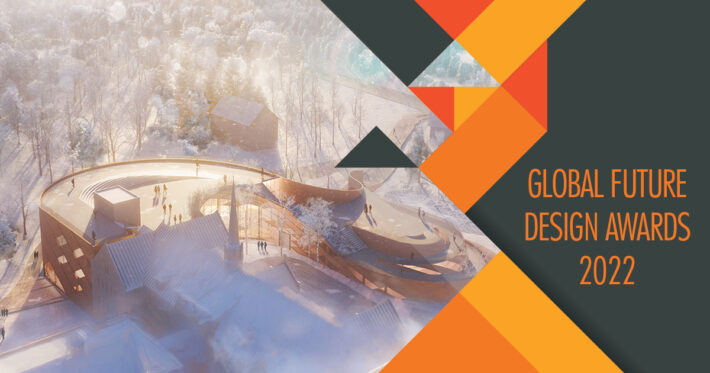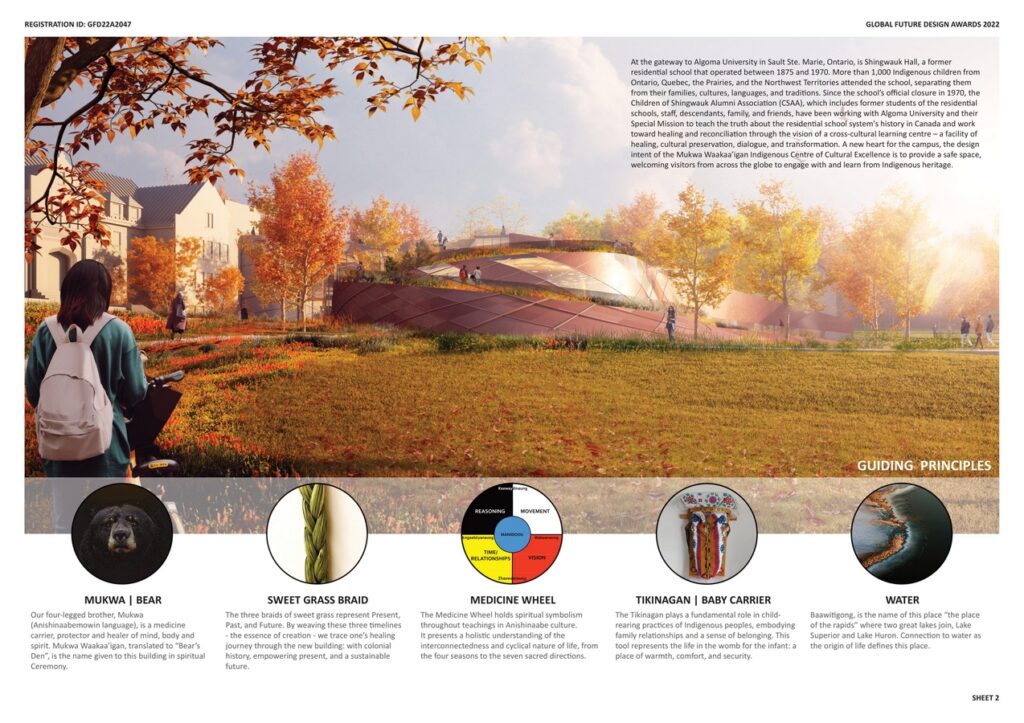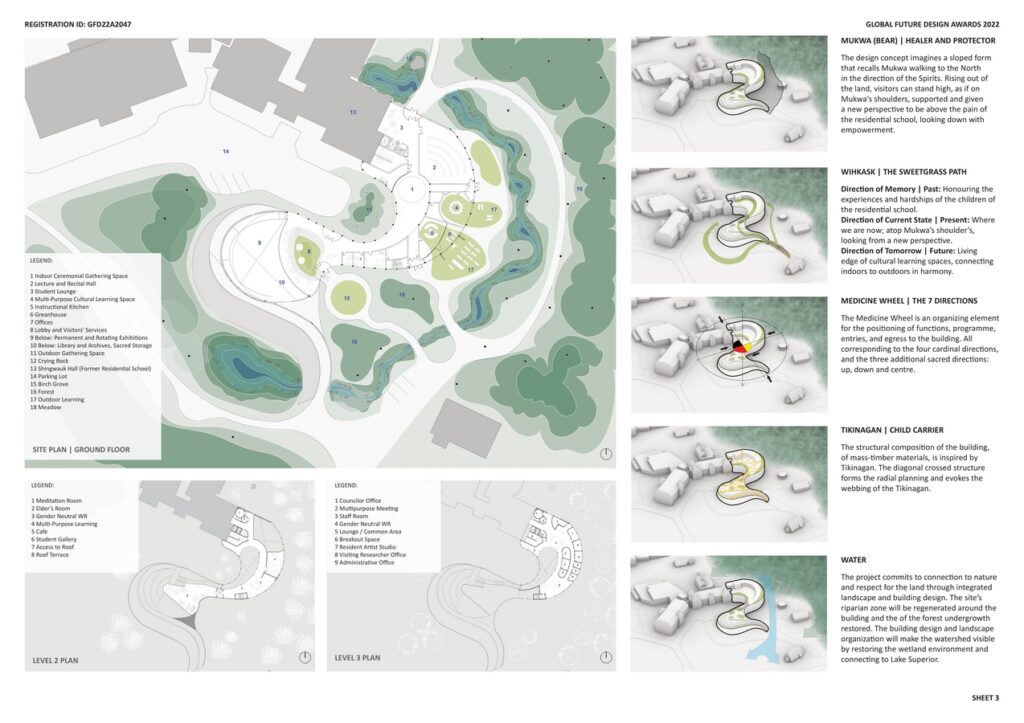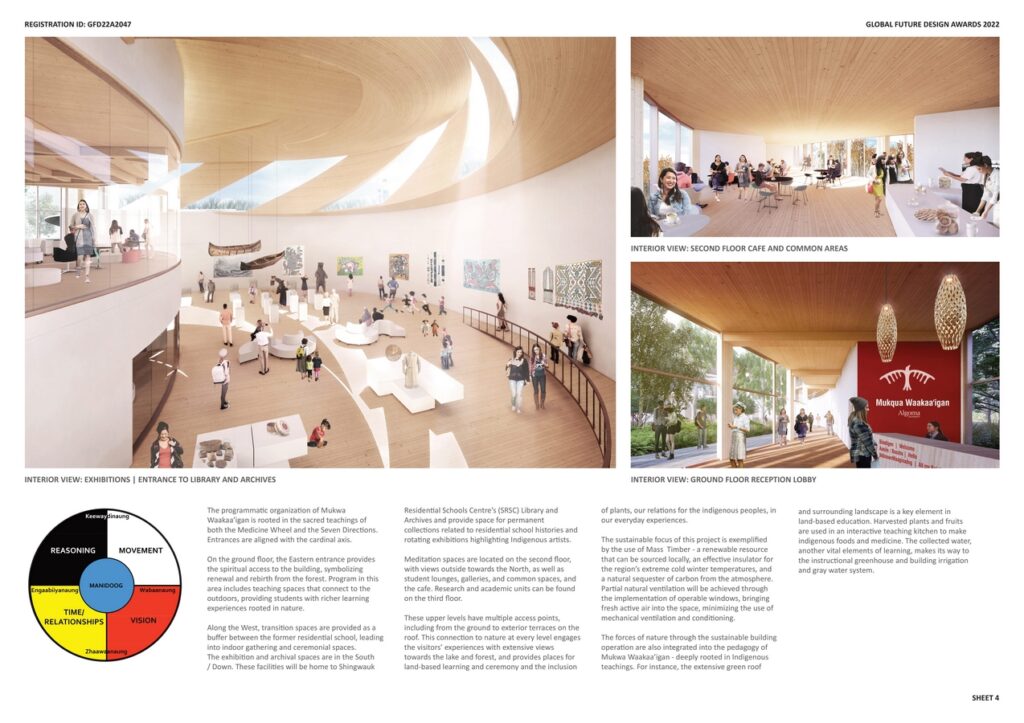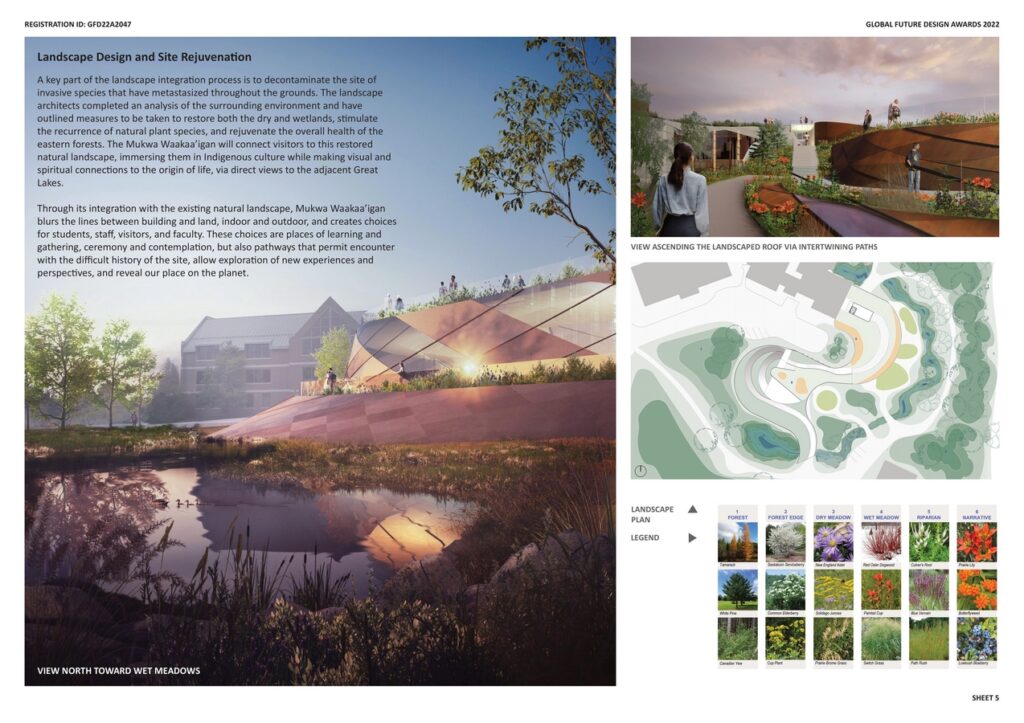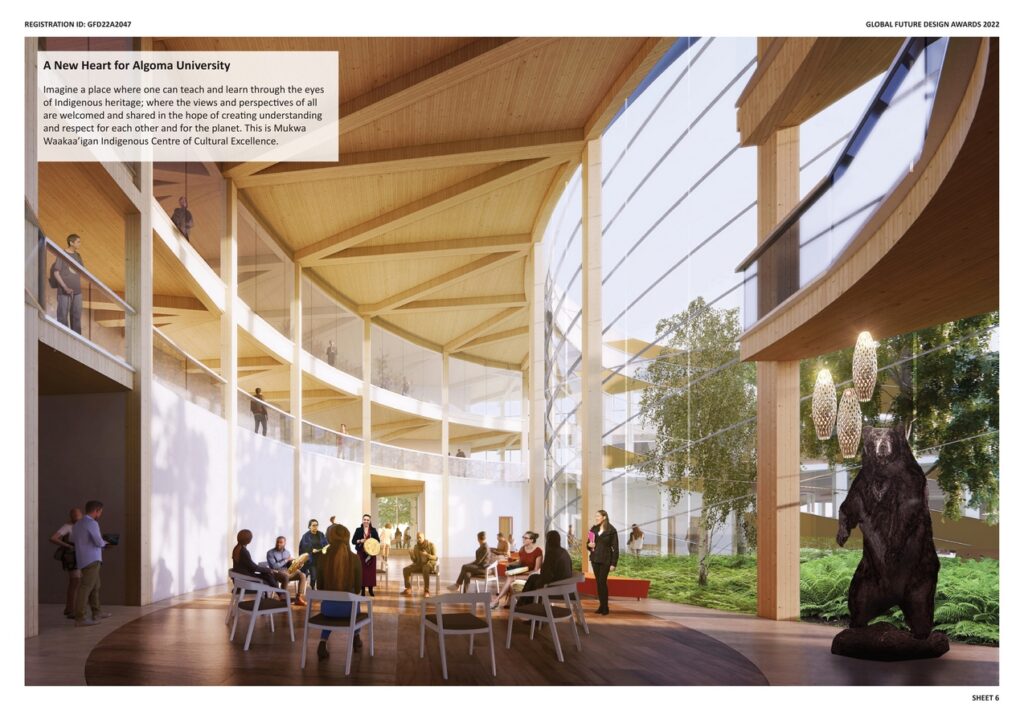At the gateway to Algoma University in Sault Ste. Marie, Ontario, is Shingwauk Hall, a former residential school that operated between 1875 and 1970. More than 1,000 Indigenous children from Ontario, Quebec, the Prairies, and the Northwest Territories attended the school, separating them from their families, cultures, languages, and traditions. Since the school’s official closure, the Children of Shingwauk Alumni Association (CSAA), which includes former students of the residential schools, staff, descendants, family, and friends, have been working with Algoma University to teach the truth about the residential school system’s history in Canada and work toward healing and reconciliation through the vision of a cross-cultural learning centre – a facility of healing, cultural preservation, dialogue, and transformation. A new heart for the campus, the design intent of the Mukwa Waakaa’igan Indigenous Centre of Cultural Excellence is to provide a safe space, welcoming visitors from across the globe to engage with and learn from Indigenous heritage.
Global Future Design Awards 2023: Entries Open!
Gold 🏆 Winner
Global Future Design Awards 2022
Mukwa Waakaa’igan Indigenous Centre for Cultural Excellence
Cultural Architecture (Concept)
Firm
Moriyama & Teshima Architects with Smoke Architecture
Architect/Designer
Carol Phillips & Eladia Smoke
Design Team
Moriyama & Teshima Architects: Carol Phillips, Partner-in-Charge, Mahsa Majidian, Project Manager, Carolina Mellado, Ehsan Naimpour, Christina Hu, Jay Zhao, Melissa Poon.
Smoke Architecture: Eladia Smoke, Project Architect, Larissa Roque, Bohdana Innes, Jennifer Kinnunen, Chelsea Jacobs, Mackenzie Pitawanakwat, Marley Bob
Location
Sault Ste. Marie, Ontario, Canada
Country
Canada
Photographer/Copyright
©Moriyama & Teshima Architects with Smoke Architecture
Ideas that emerged from the extensive stakeholder engagement that involved hiding or completely deconstructing Shingwauk Hall were considered and after careful review, it was decided to leave the building in its current state, to maintain recognition of the wrong doings which occurred at this place in the past. To confront this, the new Cultural Centre’s architectural expression comes from the land, rising through three paths that represent the past, present, and future, and standing above the residential school. This lifted position provides a stronger, more dominant, and dignified vantage point from which to look upon the site’s history.
The building design targets minimal impact on the land using regional low carbon materials and passive principles. The sustainable focus of this project is exemplified in the use of mass timber – a renewable resource that can be sourced locally, is an effective insulator for the region’s extreme cold winter temperatures, and a natural sequester of carbon from the atmosphere. Partial natural ventilation will be achieved through the implementation of operable windows, bringing fresh, active air into the space, and minimizing the use of mechanical ventilation and conditioning. Large roof areas will allow for rainwater to be harvested into a cistern.
The environmental team has completed an in-depth analysis of the surrounding environment and has outlined measures to be taken to restore both the dry and wetlands, stimulate the recurrence of natural plant species, and rejuvenate the overall health of the eastern forests. The Mukwa Waakaa’igan will connect visitors to this restored natural landscape, immersing them in Indigenous culture while making visual and spiritual connections to the origin of life, via direct views to the adjacent Great Lakes. Through its integration with the existing natural landscape, Mukwa Waakaa’igan blurs the lines between building and land, indoor and outdoor, and creates choices for students, staff, visitors, and faculty. These choices are places of learning and gathering, but also pathways that permit encounter with the difficult history of the site, allowing exploration of new experiences and perspectives, and revealing our place on the planet.


